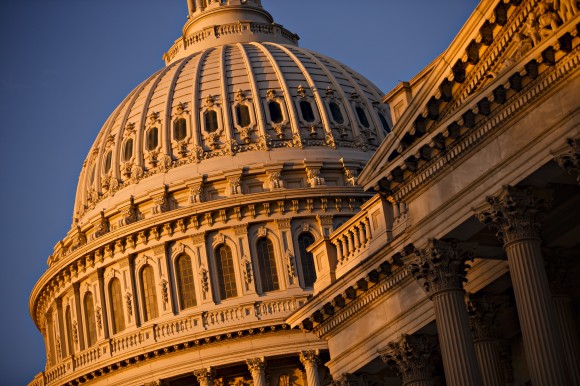The following is the viewpoint of the Property Casualty Insurers Association of America (PCI) submitted to a subcommittee of the Senate Appropriations Committee at a Nov. 16 hearing on “The Automated & Self-Driving Vehicle Revolution: What Is the Role of Government?
There are public perceptions that auto accidents and insurance costs are decreasing. In fact, our roads are becoming increasingly dangerous and auto repair and medical costs are increasing.
According to the National Highway Transportation Safety Administration (NHTSA), 17,775 people died on our nation’s roads in the first half of 2016. Traffic deaths are increasing at the fastest rate in 50 years, with a 10.4 percent increase in the first six months of this year. Even adjusted for the increase in vehicle miles traveled (VMT), the fatality rate increased 6.6 percent to 1.12 per 100 million VMT.
Non-fatal injuries are on the rise as well, increasing 28 percent since 2009, according to the National Safety Council.
Someday, self-driving cars may reduce the number of accidents and deaths. However, the potential of automated vehicle technology stands in sharp contrast to what is happening on our roads today.
The Property Casualty Insurers Association of America (PCI) is composed of nearly 1,000 member companies, representing the broadest cross section of insurers of any national trade association. PCI members write $202 billion in annual premium, 35 percent of the nation’s property casualty insurance. That figure includes over $97 billion, or 42 percent, of the auto insurance premium written in the United States.
PCI’s analysis has found that since 2013, auto claims frequency has increased nearly 5 percent, increasing the overall cost of claims by more than 18 percent. PCI has analyzed the recent increase in auto insurance claim frequency and found strong correlations with traffic congestion and distracted driving, weaker correlations from increasing populations of novice and older drivers, and some correlation with liberalized marijuana laws.
While it is important to prepare for the automated vehicle of the future, we urge policymakers to continue to focus on the auto safety challenges that face us today, such as distracted and impaired driving. H.R. 22, the FAST Act, provides for increased public awareness, improved enforcement, and establishing an enforceable impairment standard for drivers under the influence of marijuana. These provisions are critical to reducing accidents, injuries and deaths on our nation’s roads.
The importance of addressing these issues was also the subject of a bipartisan letter from 23 members of Congress to Transportation Secretary Foxx urging prompt implementation of these FAST Act provisions.
NHTSA recently unveiled its “Federal Automated Vehicle Policy,” which is intended to provide guidance for states on the testing and deployment of highly automated vehicles (HAVs). While mentions of insurance are few, the new policy raises issues that are important to the automobile insurance market as it seeks to adapt and develop new products to meet consumer needs.
Recognition of State Regulation of Insurance and Liability Issues
NHTSA’s policy identifies the following as federal responsibilities: setting and enforcing safety standards for motor vehicles, recalls, promoting public awareness and providing guidance for the states. NHTSA’s policy also recognizes that it is the state’s role to license drivers and vehicles, enforce traffic laws, regulate motor vehicle insurance, and legislate regarding tort and criminal liability issues pertaining to automated vehicles.
PCI shares the view that the states should continue to have primacy on motor vehicle insurance and liability issues as they do today, and we support NHTSA’s recognition of that role.
NHTSA’s policy also repeats the recommendation from its 2013 guidance that entities testing automated technology should provide proof of financial responsibility coverage of at least $5 million. PCI has not taken a position on this coverage requirement. However, as HAVs are deployed for public use, states will need to consider what, if any, changes need to be made to existing state motor vehicle financial responsibility laws.
Data Collection and Access
As policymakers consider what data should be collected and retained by automated vehicles, it is essential that insurers have reasonable access to the data for providing customer service for claims handling and underwriting purposes. In many auto accidents, apportionment of liability is likely to hinge upon whether or not a human driver or the vehicle itself was in control and what actions either the driver or the vehicle took or did not take immediately prior to the loss event. Access to data for insurers will speed claims handling and potentially avoid disputes that could delay compensation to accident victims. Access to historical anonymized data on the different automated vehicle systems will also be important to help insurers innovate and develop new insurance products as the nature of the risk changes.
Conclusion
Automated driving technology holds great promise for the future. Implementing clear policies on the federal and state roles in regulating automated vehicle technology and ensuring that insurers have access to vehicle data on reasonable terms to efficiently handle claims, develop products and underwrite are essential to that future. However, policymakers must not lose sight of the auto safety issues that face us today.
We look forward to working with policymakers at the federal and state level to reduce accidents on our roads today and in the future.
Topics Carriers Auto Personal Auto
Was this article valuable?
Here are more articles you may enjoy.



 Brown & Brown Files Suit Over Alleged Howden Poaching of 200+ Employees
Brown & Brown Files Suit Over Alleged Howden Poaching of 200+ Employees  Top National Insurance Journal Stories of 2025
Top National Insurance Journal Stories of 2025  ’60 Minutes’ Homeowners Ask Court to Force DFS to Divulge Heritage Probe Info
’60 Minutes’ Homeowners Ask Court to Force DFS to Divulge Heritage Probe Info  FBI Involved After Two Florida Injury Lawyers Go Missing From Fishing Trip
FBI Involved After Two Florida Injury Lawyers Go Missing From Fishing Trip 

